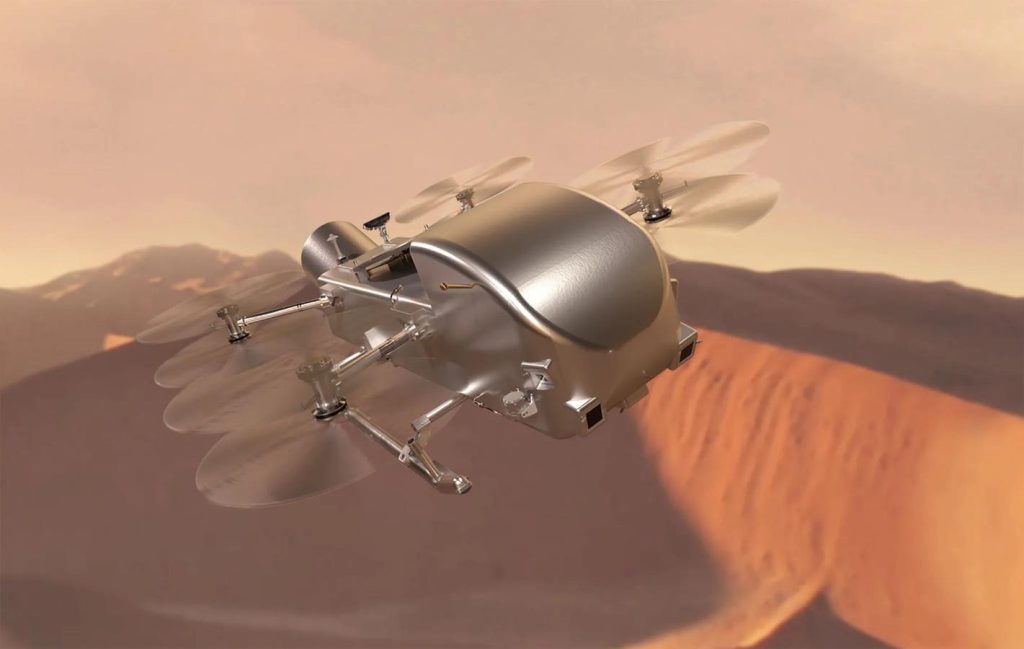NASA is planning to send a spacecraft to explore Titan, Saturn’s largest moon, in an unprecedented mission called Dragonfly. The Dragonfly spacecraft will be an octocopter equipped with various science instruments to explore Titan’s surface for organic molecules and potential biosignatures. This mission is set to begin in 2034 and will last for a minimum of two Earth years, during which Dragonfly will change locations every Titan day, which is equivalent to 16 Earth days.
Titan is an Earth-like world with many unique features, including a thick, hazy atmosphere, lakes, oceans, shorelines, valleys, mountains, and mesas. Dragonfly will be nuclear-powered and will be able to travel tens of miles or kilometers in under an hour. The spacecraft will pick up where the Huygens probe left off, aiming to provide more detailed insights into Titan’s surface chemistry and geology.
Titan’s atmosphere is 98% nitrogen and 2% methane, with a surface temperature of around -290ºF/-179ºC. Despite being an ocean world with seas and lakes filled with liquid ethane and methane, Titan shares many Earth-like features like rivers, mountains, and canyons. However, its dense atmosphere has made it a challenging world to study from afar, with the Cassini probe providing some insights during its mission from 2004-2017.
The Dragonfly mission is expected to cost $3.35 billion, significantly more than the initial estimate of $1 billion. The use of a superheavy rocket for launch and other costs associated with a delay due to COVID-19 have contributed to the increased budget. This mission falls under NASA’s New Frontiers program, which includes other missions like the New Horizons mission to Pluto and the Kuiper Belt, the Juno mission orbiting Jupiter, and the OSIRIS-REx mission that returned samples from the asteroid Bennu.
The Dragonfly mission will provide valuable insights into Titan’s complex atmosphere and surface features, inspiring future generations with views of a world unlike any other in our solar system. By exploring the prebiotic organic chemistry of Titan, scientists hope to uncover more about the potential for life beyond Earth and better understand the unique characteristics of this fascinating moon around Saturn. With its nuclear-powered rotorcraft, Dragonfly is poised to take planetary exploration to new heights.















